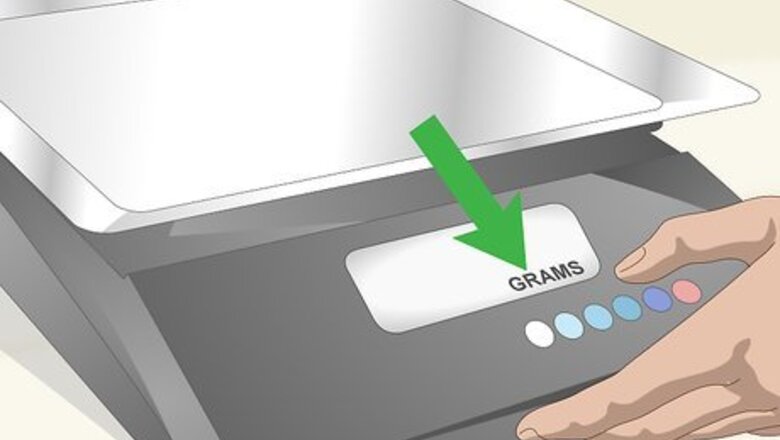
views
Measuring with a Scale
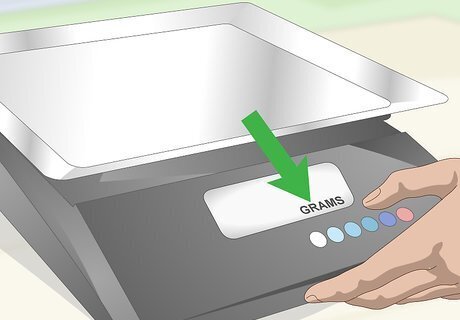
Choose a scale that measures in grams. Make sure the scale can handle the size of objects you plan on weighing. Since a gram is a metric unit of measurement, your scale needs to use the metric system. Scales are available in digital and mechanical models. For example, a kitchen scale is used to measure kitchen ingredients. A body weight scale is much larger and can tolerate heavier items. Digital scales are easier to use and more accurate, but mechanical scales are less expensive.
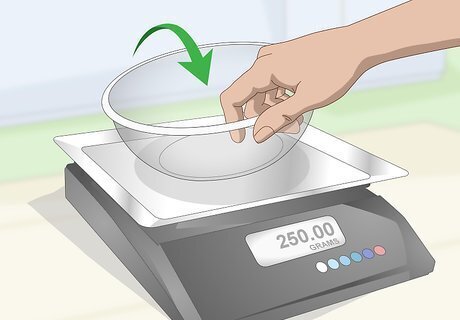
Weigh an empty container first before putting an item in it. If you plan to measure something you can’t put directly on the scale, weigh the container before putting the item in it. It is the only way to accurately measure loose objects like flour and sugar. This way, the container’s mass isn’t counted in the final measurement. For example, when weighing out a cup of flour, put the empty measuring cup or spoon on the scale first. If your scale does not have a tare function, note the weight of the container so you can subtract it from the final measurement.
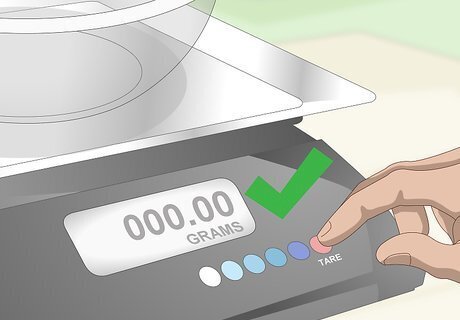
Press the tare button to zero out the scale. The mysterious button labeled "tare" on digital scales is a reset button. Press the tare button after each item you measure on the scale. If you weighed a container, you can fill it now. If you are using a mechanical scale, the scale will have a knob you turn to 0. The scale’s measuring needle should point to 0 at the center of the dial. For the most accurate measurements, always zero out the scale when there is nothing on it, then again after placing a container on it. J. Kenji López-Alt J. Kenji López-Alt, Chef and Food Science Writer For baking recipes requiring precision, a digital kitchen scale measuring ingredients by weight rather than volume is crucial. Versatile scales that measure in grams and ounces ensure accuracy across recipes. Check calibration with a weight or coin, then place mixing bowl on scale, hit tare to reset to zero, and add ingredients until reaching target gram measurements.
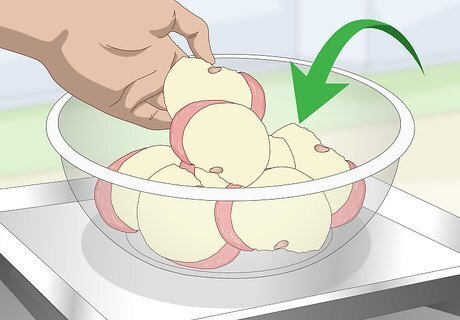
Set the object you wish to measure on the scale. Place your object in the center of the scale. If you measured a container first, you can now put the object you wish to measure inside the container. The scale will then calculate the heaviness of your object. For an accurate reading, make sure the entire object is on the scale. For example, if you’re weighing apple slices, you can either place them on the scale directly or move them into a container you previously weighed.

Finish weighing the object on the scale. Wait for the scale’s digital display or needle to come to a stop. When it finishes moving, read the number to find out how heavy the object is. Make sure that the weight is in grams. Then, remove your object and hit the tare button again to reset the scale. If you did not zero out the scale first, subtract the weight of the container from the final measurement you see now.
Using Measuring Cups and Spoons
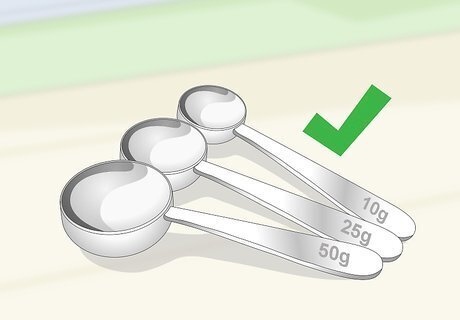
Get a spoon or cup that measures in grams. Visit a store that sells kitchen supplies to find a variety of measuring tools. The most accurate of these tools, besides scales, are spoons designed to measure grams. They will likely have both milliliters and grams listed on the handles. Spoons and cups can never be as precise as scales, but they can be used as containers and placed on scales. Spoons that have measurements like “tablespoon” can be used, but these measurements aren’t descriptive and vary from spoon to spoon. Some glass measuring cups have gram measurements printed on them and can also be used.
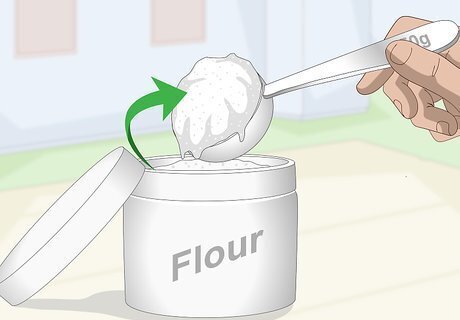
Fill the spoon with the ingredient you want to measure. Select your measuring tool, then fill it with your ingredient. This is easy with spoons, since all you have to do is dip the spoon into the ingredient. You will have a quantity close to the measurement listed on the spoon without having to weigh it. For example, if you need 15 g of flour, dip your 15 g spoon into the flour to fill it completely. If you have measuring devices that use tablespoons and teaspoons, look up a conversion chart such as https://www.exploratorium.edu/cooking/convert/measurements.html.

Level off the ingredient with a knife. Pick up a butter knife or another dull item you can drag along the spoon without damaging it. Hold it flat against the top of the spoon and drag it all the way across. This will knock any excess off the spoon, giving you a more accurate measurement. Anything above the spoon’s brim is considered excess. Scrape off the excess every time you measure an ingredient.

Use the ingredient in your recipe. Using the spoon or measuring cup, you will have a rough estimate of the ingredient you need. For better accuracy, place the spoon or cup on a scale and measure it again. Spoons and cups can’t measure mass precisely. For example, a spoonful of flour is always going to be a different weight than a spoonful of herbs or nuts.
Converting Other Measurements to Grams
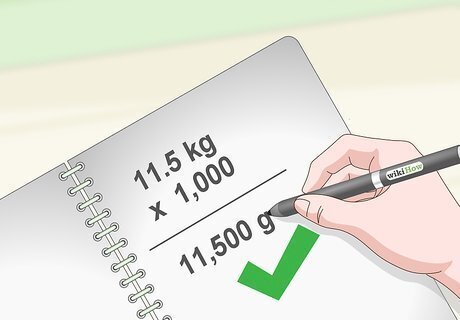
Multiply kilograms by 1,000 to convert to grams. A kilogram is equal to 1,000 grams. If you are measuring something large, you can use this fact to convert easily between units. Convert grams back to kilograms by dividing by 1,000. For example, 11.5 kg is the same as 11,500 g. 11.5 k g ∗ 1 , 000 = 11 , 500 g {\displaystyle 11.5kg*1,000=11,500g} 11.5kg*1,000=11,500g.

Use a calculator to change ounces to grams. An ounce is the basic mass and weight unit in the imperial measurement system, used in countries such as the U.S. Multiply the amount of ounces by 28.34952 to convert it to grams. This is a harder conversion, so you may need a calculator or online conversion tool such as https://www.rapidtables.com/convert/weight/ounce-to-gram.html. For example, 12 oz equals about 340.12 g. 12 o z ∗ 28.34952 = 340.12 g {\displaystyle 12oz*28.34952=340.12g} 12oz*28.34952=340.12g. You may also see pounds. This is an imperial measurement similar to kilograms. There are 16 ounces in a pound.
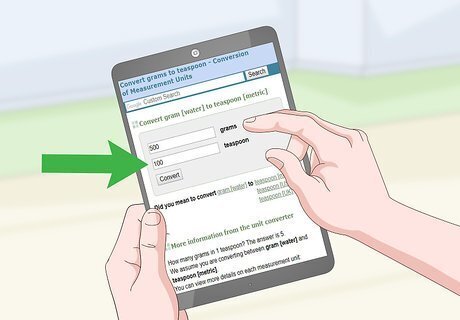
Use an online converter to change cups to grams. A “gram” is a measurement of mass, often used for solid items like flour and sugar. “Cup” or “teaspoon” are a few measurements of volume, used for liquids like cooking oil and water in a kitchen. You can convert these quickly by using a conversion tool such as https://www.convertunits.com/from/grams/to/teaspoon+[US]. These measurements are not interchangeable, so there is no single conversion formula. Many cooking instructions now include both cup and gram measurements.
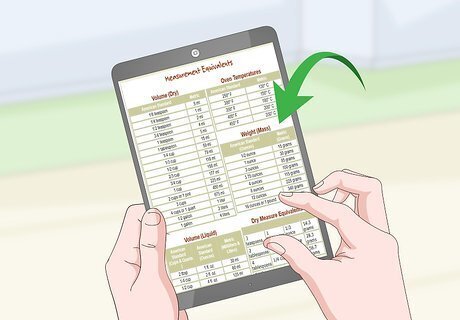
View a conversion chart for common cup-to-gram measurements. This can help you deal with recipes that don’t measure in grams, as well as ingredients you add in small batches. Search online to convert specific ingredients into grams or use a general conversion chart like the one at https://www.exploratorium.edu/cooking/convert/measurements.html. 1 gram of instant yeast is about ⅓ of a teaspoon. 1 gram of table salt is about ⅙ of a teaspoon. A gram of baking soda or baking powder is approximately ⅕ of a teaspoon. 1 gram of ground cinnamon equals approximately ⅜ of a teaspoon. 1 gram of diastatic malt powder or active dry yeast is about ¼ of teaspoon.

Write down cup-to-gram comparisons you use often. A cup of 1 ingredient is not equal in weight to a cup of another ingredient. Because every ingredient differs a lot by weight, it can be helpful to keep in mind a few common conversions for when you don’t have a scale handy. You can also use a conversion chart, such as at http://dish.allrecipes.com/cup-to-gram-conversions/. For example, a cup of butter is about 227 g. A cup of all-purpose flour or confectioners’ sugar equals about 128 g. A cup of honey, molasses, or syrup equals about 340 g. Chocolate chips vary from brand to brand, but a cup is about 150 g. A cup of cocoa powder equals about 100 g. 1 cup of chopped walnuts or pecans is about 120 g.















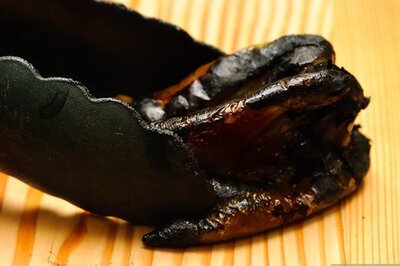


Comments
0 comment